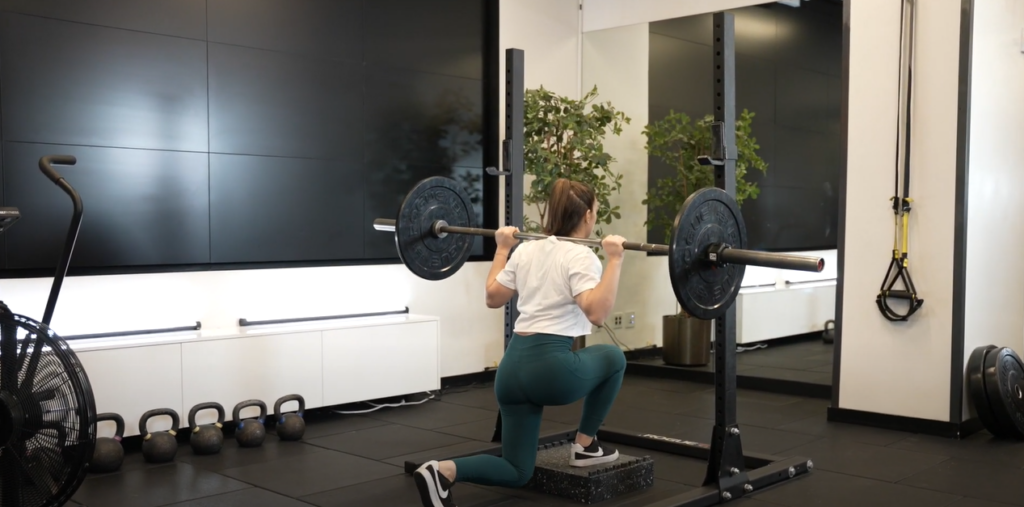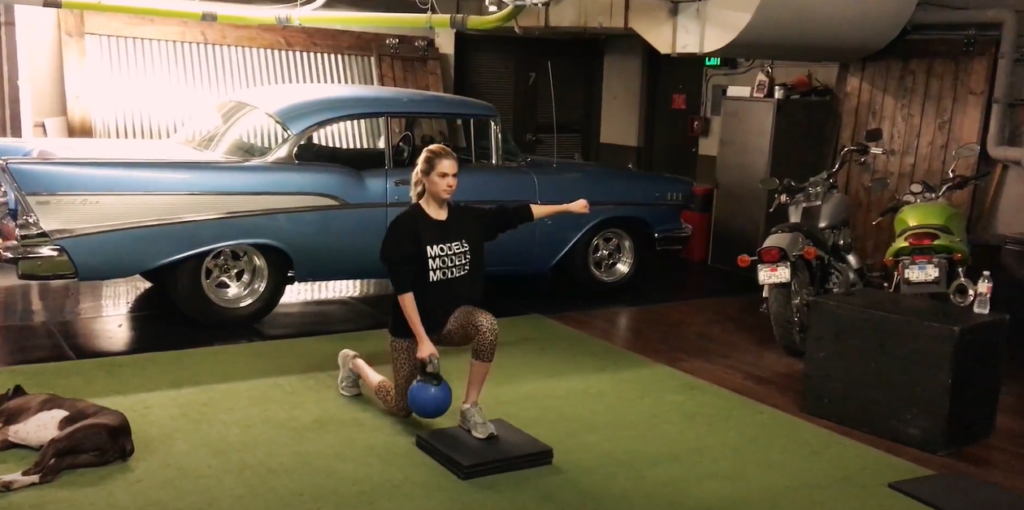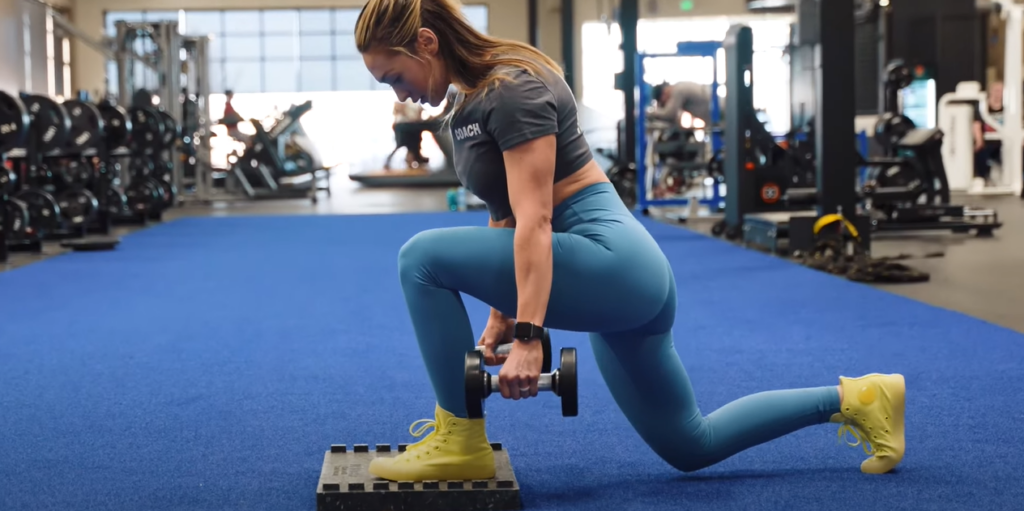Are you ready to embark on an epic journey into the heart of your body’s strength and vitality? Join us as we venture into the mesmerizing world of targeted muscles! Prepare to be amazed as we unveil the hidden secrets of the muscles that shape and define your body. Strap on your seatbelt, for this adventure promises to be both unique and engaging!
Table of Muscles
Let’s start our expedition with a visually captivating table that showcases the magnificent muscles we’ll be exploring:
| Muscle | Location | Function |
|---|---|---|
| Quadriceps | Front thigh muscles | Extend and straighten leg |
| Glutes | Buttocks muscles | Support hip movement |
| Hamstrings | Back thigh muscles | Flex and bend leg |
| Calves | Lower leg muscles | Assist in ankle movement |
| Core | Abdominal & lower back | Stabilize and support |
Quadriceps: Front and Center of Power
The Quadriceps, or simply the “Quads,” reign supreme at the front of your thigh, and they are true powerhouses! These four muscles (Vastus Lateralis, Vastus Medialis, Vastus Intermedius, and Rectus Femoris) work together to extend and straighten your leg, allowing you to kick, jump, and conquer any challenge that comes your way.
Glutes: The Glorious Buttocks
Ah, the Glutes! These mighty muscles, consisting of the Gluteus Maximus, Gluteus Medius, and Gluteus Minimus, form the foundation of your posterior. They play a pivotal role in stabilizing your hips, maintaining an upright posture, and powering your hip movements, such as climbing stairs and thrusting your hips forward in a victorious dance!
Hamstrings: Backstage Heroes
While the Quads take the spotlight at the front, the Hamstrings silently toil at the back of your thigh. Comprising the Biceps Femoris, Semitendinosus, and Semimembranosus, these tireless muscles flex and bend your knee, and they contribute to the smooth extension of your hip.
Calves: Elegance in Motion
Behold the Calves, the unsung heroes of lower leg movements! With the Gastrocnemius and Soleus as their star players, the Calves are responsible for enabling you to stand on your toes, walk, run, and leap with grace and finesse. They’re like the ballerinas of your legs, ensuring each movement is executed with elegance.
Core: The Center of Stability
Last but certainly not least, we arrive at the Core, the epicenter of strength and stability! This group encompasses the rectus abdominis, obliques, transverse abdominis, and erector spinae. The Core muscles work harmoniously to provide support and stability to your spine and pelvis. Whether you’re lifting weights, twisting, or simply maintaining good posture, your Core muscles are your faithful allies.
Benefits of the Deficit Reverse Lunge

The following table illustrates the key benefits of the deficit reverse lunge:
| Benefit | Description |
|---|---|
| Improved Leg Strength | Enhances muscle strength and endurance in the lower body, aiding in daily activities. |
| Increased Balance and Coordination | Engages stabilizing muscles, improving overall balance and motor control. |
| Versatility and Accessibility | Can be adapted for different fitness levels and requires minimal equipment. |
| Injury Rehabilitation | Assists in the recovery of leg and knee injuries by strengthening surrounding muscles. |
Technique and Form
The deficit reverse lunge is a highly effective lower body exercise that targets the quadriceps, hamstrings, glutes, and calves. When performed correctly, it can help improve leg strength, stability, and balance. To ensure effectiveness and safety, follow this detailed process:
Proper Execution
- Starting Position: Stand on an elevated surface, such as a weightlifting platform, aerobic step, or sturdy box. If you want to add resistance, hold dumbbells at your sides with a neutral grip;
- Step Backwards: Begin the movement by slowly stepping backward with one leg. The key is to maintain control throughout the entire range of motion;
- Lower Body: As you step back, bend both knees to lower your body towards the ground. Aim to reach a 90-degree angle in both the front and back legs. Make sure the front knee stays aligned with the ankle to avoid excess strain on the knee joint;
- Return to Start: Press through the heel of the front foot to push yourself back up and return to the starting position. Maintain a steady and controlled movement throughout the ascent;
- Repeat: Now, switch legs and perform the desired number of repetitions. You can alternate legs for a more dynamic workout or complete all repetitions on one leg before switching.
Common Mistakes and Corrections
To get the most out of the deficit reverse lunge and prevent potential injuries, be mindful of the following mistakes and apply the suggested corrections:
| Mistake | Correction |
|---|---|
| Front Knee Over Toe | Focus on maintaining alignment of the knee and ankle during the movement. Avoid allowing the front knee to extend beyond the toes. |
| Hunched Back | Keep the chest up and the back straight throughout the exercise. Engage your core to support your spine and maintain proper posture. |
To ensure a safe and injury-free workout, keep these considerations in mind while performing the deficit reverse lunge:
- Proper Footwear: Choose appropriate footwear that provides adequate support and stability. Avoid wearing shoes with high heels or insufficient grip;
- Start with an Appropriate Elevation: If you are new to this exercise, start with a lower platform or step to acclimate your body to the movement before progressing to a higher elevation;;
- Pain or Discomfort: If you experience any pain or discomfort during the exercise, stop immediately and consult a fitness professional or healthcare provider. The deficit reverse lunge might not be suitable for everyone, especially those with certain medical conditions or injuries.
Variations and Progressions

The deficit reverse lunge is a versatile exercise that can be customized to suit different fitness levels and goals. By incorporating variations and progressions, you can keep your workouts engaging and continuously challenge your body. Here are some unique and exciting variations and progressions for the deficit reverse lunge:
Weighted Deficit Reverse Lunge
- With Dumbbells/Kettlebells: Hold dumbbells or kettlebells in each hand while performing the deficit reverse lunge. The added resistance increases the intensity and further targets your lower body muscles, providing a fantastic strength-building workout;
- With Barbell: For an even more challenging variation, perform the deficit reverse lunge with a barbell placed across your upper back, similar to a back squat. This variation not only works your lower body but also engages your upper back and core for increased overall strength and stability.
Deficit Reverse Lunge with Twist
- Body Twist: Engage your core muscles by incorporating a twist as you perform the deficit reverse lunge. As you step back, rotate your torso towards the front leg, then return to the starting position. This adds a rotational element, enhancing your core strength and mobility;
- With Medicine Ball: Take the twist variation a step further by holding a medicine ball with both hands at your chest. As you lunge back, twist your torso in the direction of your front leg. The added weight challenges your balance and coordination while working your entire body.
Progressions
Starting from the basic form, here are progressive stages to challenge yourself as you become more proficient in the deficit reverse lunge:
- Bodyweight Deficit Reverse Lunge: Begin with the standard deficit reverse lunge without any additional weights. Focus on mastering the movement pattern and maintaining proper form;
- Weighted Deficit Reverse Lunge: Gradually introduce dumbbells or kettlebells to increase the resistance. Start with lighter weights and gradually progress to heavier ones as you gain strength and confidence;
- Deficit Reverse Lunge with Barbell: Once you are comfortable with weighted lunges, try the barbell variation. This variation requires greater stability, as the barbell challenges your balance differently from holding weights at your sides;
- Deficit Reverse Lunge with Twist: Incorporate the twist variation into your routine to engage your core and add a dynamic element to the exercise.
Programming and Integration
Incorporating into a Routine
- Strength Training: 3-4 sets of 8-12 repetitions;
- Endurance Training: 2-3 sets of 15-20 repetitions;
- Full-Body Workout: Combining with upper body exercises.
Periodization Strategies
- Hypertrophy Phase: Higher volume, moderate weight;
- Strength Phase: Lower volume, increased weight;
- Maintenance Phase: Balanced approach to maintain gains.
Sample Workout Plan
Here’s a one-week sample incorporating the deficit reverse lunge:
| Day | Exercises |
|---|---|
| Monday | Deficit Reverse Lunge, Squats, Deadlifts, Bench Press |
| Wednesday | Deficit Reverse Lunge with Twist, Pull-ups, Planks, Bicep Curls |
| Friday | Weighted Deficit Reverse Lunge, Shoulder Press, Rows, Tricep Extensions |
Conclusion
The deficit reverse lunge is more than a lower body exercise; it’s a multifaceted movement that offers benefits ranging from strength and stability to balance and coordination. Its versatile nature makes it accessible to a wide array of individuals, with variations and progressions to suit different needs and goals.
Emphasis on proper form, safety, and individualized programming will lead to success with this exercise. Whether integrating it into a general fitness routine or using it as a rehabilitation tool, the deficit reverse lunge stands as a valuable addition to one’s training arsenal.
FAQ
Generally, 2 to 6 inches, depending on flexibility and comfort.
Adding weights, increasing the elevation, or incorporating twists can increase intensity.
Consult with a healthcare provider or fitness professional to ensure suitability.
Yes, the bodyweight version is an effective variation.
